Uncover Auxerre's vibrant flavors and culinary gems with our expert guides. Plan an unforgettable trip now!
Read more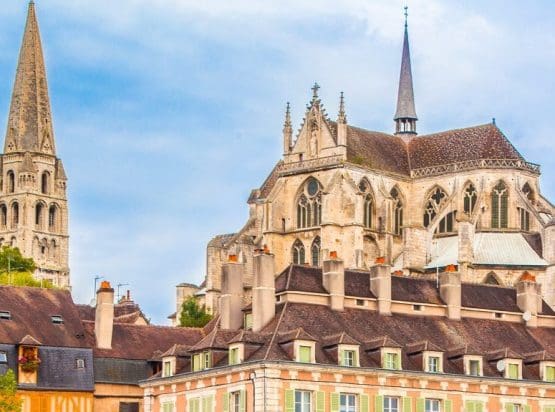
EXPLORE ALL OUR BURGUNDY WINE REGIONS GUIDE
Last updated: April 4, 2025
In the serene landscape of Yonne (158km southeast of Paris), winegrowers produce one of the world’s greatest expressions of the Chardonnay grape. Yet Chablis and its greenly gold glint often blindside aficionados of Meursault and Montrachet; “lean but lovely” best describes the mineral-scented, taut wines of this iconic appellation. Indeed, while many attempt to imitate Chablis worldwide, few unoaked Chardonnay wines genuinely capture the brilliance of Burgundy’s best-value white.
Discover More About French Wine
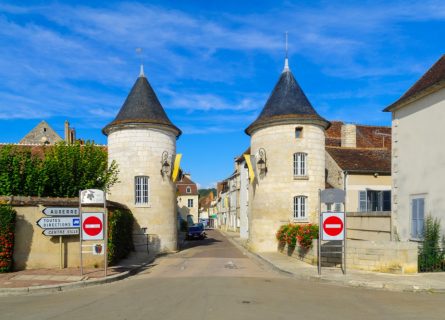
Chablis is the ultimate irony: a classic wine style produced in the most unremarkable, sleepy parts of the French landscape. The town of the same name is anodyne and unimpressive – there are no impressive buildings and a noticeable paucity of good restaurants. Nevertheless, every corner of the globe recognizes – and adores – its flagship white, exporting it worldwide.
The Romans planted its first vineyards after their conquest of Gaul in the last century BC; vines carpeted both sides of the Serein River in the Yonne département, eventually feeding into the Seine that flows through Paris. The collapse of the Western Roman Empire in AD 476 saw a massive decline in local viticulture. However, an unforeseen resurgence helped Chablis to get back on its feet in the Middle Ages.
The agents of this renewal were the Cistercian monks of the Catholic Church – the same monks who managed and organized the vineyards of Champagne and the Côte d’Or. Due to the considerable geographical advantages bestowed upon the region, Chablis enjoyed a virtual monopoly over the hearts and minds of the Parisian upper classes.
Yet discerning wine lovers today would no doubt find the standard ‘vin ordinaire of Chablis‘ in the 1700s horrifying: anemic, tart, and very ordinary plonk, destined for direct consumption from the barrel in the bistros of Paris. In the 19th century, however, there were more than 40,000 hectares under vine, attracting the attention of such notable luminaries as Leo Tolstoy.
Phylloxera and Economic Challenges
Meanwhile, Chablis continued to benefit from its close proximity to the French capital. However, the arrival of the phylloxera louse in 1893 did much damage to the vineyards of Yonne; increased competition from the Midi (thanks to a recently completed railway line) further accentuated Chablis’ decline in the early 20th century.
Economic stagnation and rural depopulation also took their toll, reaching a new low in 1945. That year, a savage frost destroyed any hope of producing wine in the region, and the total area under vine had shrunk to a meager 480 hectares.
Since then, however, Chablis has enjoyed a sustained period of growth and prosperity, with investors contributing new ideas, techniques, and philosophies. This singular expression of the Chardonnay grape remains one of France’s most iconic viticultural emblems.
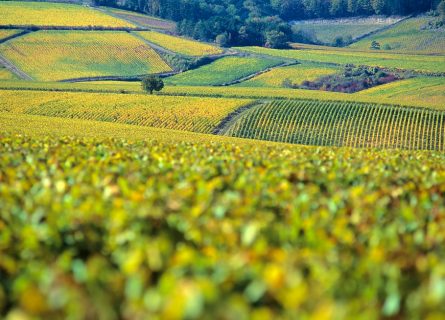
At first glance, there is little complexity or confusion surrounding the magnificent wines of Chablis. By law, every bottle of wine produced in the appellation must be 100% Chardonnay white. Absolutely no deviations, amendments, or innovations are allowed! Yet the soils and traditions of this venerable region are a different matter entirely. Here, we find a culture that closely resembles the hierarchical framework of the Côte d’Or; however, there are key differences in climate and wine style.
The Geographical Marvel of Chablis
Chablis’s vineyards are located southeast of Paris, equidistant between Champagne, Sancerre in the Loire Valley, and the Côte d’Or. There are approximately 5,800 hectares under vine, cultivated on chalky soils in the Yonne département. Fans generally accept that the finest terroirs of Chablis lie in the Kimmeridgian limestone soils on the right bank of the River Serein, where the appellation situates its Grand Cru vineyards.
These climats (vineyard sites) offer an exceptional combination of drainage, aspect, elevation, and moisture retention, ensuring that Grand Cru Chablis earns its reputation as the benchmark for unoaked Chardonnay.
The left bank of the river also boasts excellent sites, particularly the Premier Cru vineyards of Montmains and Côte de Lechet. Meanwhile, cultivators have planted the vineyards east of Chablis town on lighter soils with a lower percentage of clay and fossils, known as Portlandian limestone.
Likewise, Maligny, Villy, and Lignorettes communes to the north are rich in Portlandian terroir; certain producers have long argued that these lighter soils yield a less structured and complex interpretation of the Chardonnay grape.
Climate: The Defining Factor of Chablis’ Identity
However, many would argue that climate, not soil, is the key to understanding Chablis’ unique character. Comparing Chablis and the white wines of the Côte de Beaune is actually misleading and unhelpful. The reason? The vineyards of Chablis have a very cool climate, where ripening the grapes is a challenge.
Cold winters and temperate summers yield berries with moderate sugar levels and high acidity, in contrast to the warmer conditions of the Côte d’Or and the Maconnais. In very difficult years, winemakers may need to chaptalize (add sugar) to achieve a minimum alcohol level of 10 percent for (village) Chablis.
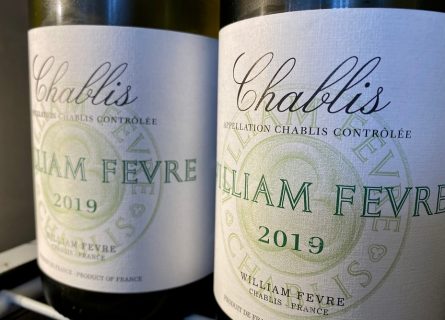
Chablis has four distinct quality tiers: Grand Cru, Premier Cru, Chablis, and Petit Chablis. A strict delineation of the Chablis subzones forms the basis for this ranking system, which organizes them according to the quality of wine they produce. It remains one of Europe’s most cogent and useful consumer wine guides; Grand Cru wines always have more weight and power than village Chablis, for example. Meanwhile, if you seek a higher-quality wine, you should best avoid Petit Chablis altogether.
The Pinnacle of Chablis: Grand Cru Vineyards
However, Chablis’ seven Grand Cru vineyards are a different story. Of the zone’s 5771 hectares of vines, just over a hundred have the entitlement to make Grand Cru whites; they represent Chablis at its most profound and complex. Many regard Le Clos as the appellation’s answer to Corton-Charlemagne; however, Valmur, Vaudesir, Preuses, and Grenouilles also yield superlative wines of real distinction.
However, regarding the price-to-quality ratio, you’re better off exploring one of Chablis’ numerous Premier Crus – 750 hectares. Some of the most renowned climats include Mont de Milieu, Fourchaume, and Montee de Tonnerre. We could also add Vau de Vey, Côte de Lechet, and Montmains to that list. These are the genuine bargains of Burgundy – exceptional craftsmanship at prices that significantly undercut Puligny-Montrachet.
Chablis and Petit Chablis Selection
However, while marketers often price both ‘generic’ Chablis and Petit Chablis at less than $20, the quality can be patchy. Much of the acreage dedicated to making Chablis and Petit Chablis consists of young vines, and in ample years, the volumes can often dwarf the production figures in the Côte de Beaune. Our advice is to only buy from a recommended source. Or, jump ahead to Premier Cru and reap the rewards.
That said, we cannot discount the importance of winemaking in Chablis. The historical paradigm involved winemakers harvesting barely ripe grapes at the end of September and vinifying large quantities of juice that they had ‘inoculated’ with generous volumes of sulfur dioxide in the vat.
Winemakers did not employ protective handling, and they considered oak barrels both an unnecessary and unaffordable luxury. In their youth, such wines could be very hard and acidic, with a distinct whiff of rotten cabbage that would curl hairs ten blocks away.
Thankfully, such wanton disregard for the superlative quality of Chablis’ raw materials is now a distant memory. All the best producers use very sensitive and nuanced winemaking methods: protection from oxidation, manual sorting, and fermentation at low temperatures in stainless steel.
Tradition vs. Innovation: The Oak Debate in Chablis
Tradition dictates that Chablis should not attempt to emulate the Côte de Beaune. Instead, it should represent a pure, unoaked expression of the Chardonnay grape – a fresh, crystalline white. However, a relatively small number of houses use a percentage of oak in the fermentation and maturation of their top wines; William Fèvre is one such advocate of aging in used wood. Very occasionally, the Chablisienne will mature select cuvèes in new barrique for around 12 months. But many producers regard this as sacrilegious.
Discover more about Burgundy Wine Classifications
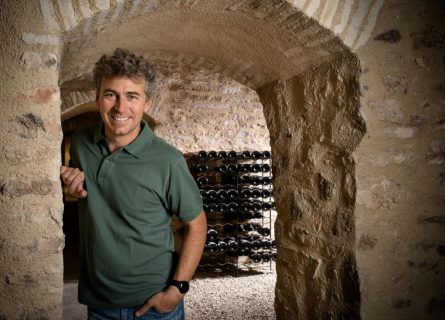
Chablis is one of France’s greatest white wines – unique and multifaceted. Celebrated worldwide for offering a striking alternative to the more opulent – and ripe – expressions of Chardonnay made in the Côte d’Or, a Chablis made to imitate Meursault is no Chablis at all. Instead, it should dazzle us with its steely perfume: gunflint, wet stones, and citrus.
From Steely to Rich Complexity
After a few years in bottle (if the vintage is up to scratch), it will reveal rounder notes of buttered toast, hazelnuts, and brioche. Above all, Chablis should never be too oaky or vivacious in its fruit expression. This wine, built for seafood, is a white of impeccable balance, finesse, and acidity. It should refresh your palate like no other wine style. It should represent the Chardonnay grape in a way seldom encountered elsewhere.
The Impact of Climate and Craft
Yet, not all Chablis will conform to this paradigm. There are several reasons for the occasionally surprising (or disappointing) bottles of Premier and Grand Cru Chablis encountered in restaurants and retail stores, including climate change and winemaker preferences. The former has undoubtedly impacted the region: growers struggled to maintain freshness in the searing heat of 2018 and 2015. Meanwhile, there is a school of thought in Chablis that emphasizes maturation in new oak, albeit the critical mass tends to eschew this approach.
Traditionalists vs. Innovators
Nevertheless, if you like a hint of exoticism in your Chablis wine, check out the spicy cuvèes of Raveneau and René & Vincent Dauvissat. However, the traditionalists will want to explore the exceptional wines of Louis Michel & Fils. The family cellars do not contain a single oak barrel – nor should they. This is Chablis at its most pure and authentic. A wine with few equals and no peers.
Chardonnay is a green-skinned grape varietal native to the Burgundy wine region in France and one of the most popular varieties worldwide.
Find out more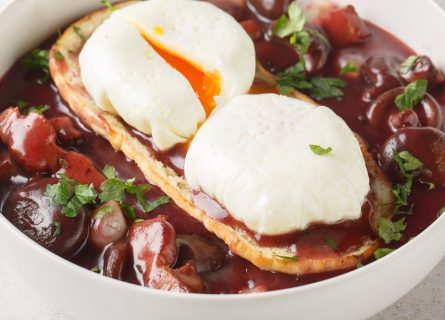
I won’t pull any punches: Chablis is a bit of a dead end when dining out. However, Auxerre is a different matter altogether. This handsome city (less than 20km from Chablis) guarantees a surfeit of atmospheric bistros and restaurants, offering hospitality and conviviality. After a refreshing glass of Montmains, peruse the menu.
You’ll discover some local specialties, not least the always delicious Boeuf bourguignon, escargots (snails), and Oeufs en meurette. The latter is a mouthwatering medley of shallots and lardons slowly braised in a red wine/stock base and topped with a poached egg—quintessential rural French cooking at its most satisfying.
A gastronomic Guide to the Cuisine of Burgundy: Read more
If you would like us to customize an exclusive luxury tour, contact us and let us know your travel plans. We offer luxury food and wine tours for private groups of a mininium two guests. In addition, all of our private, chauffeured tours are available year-round upon request.

